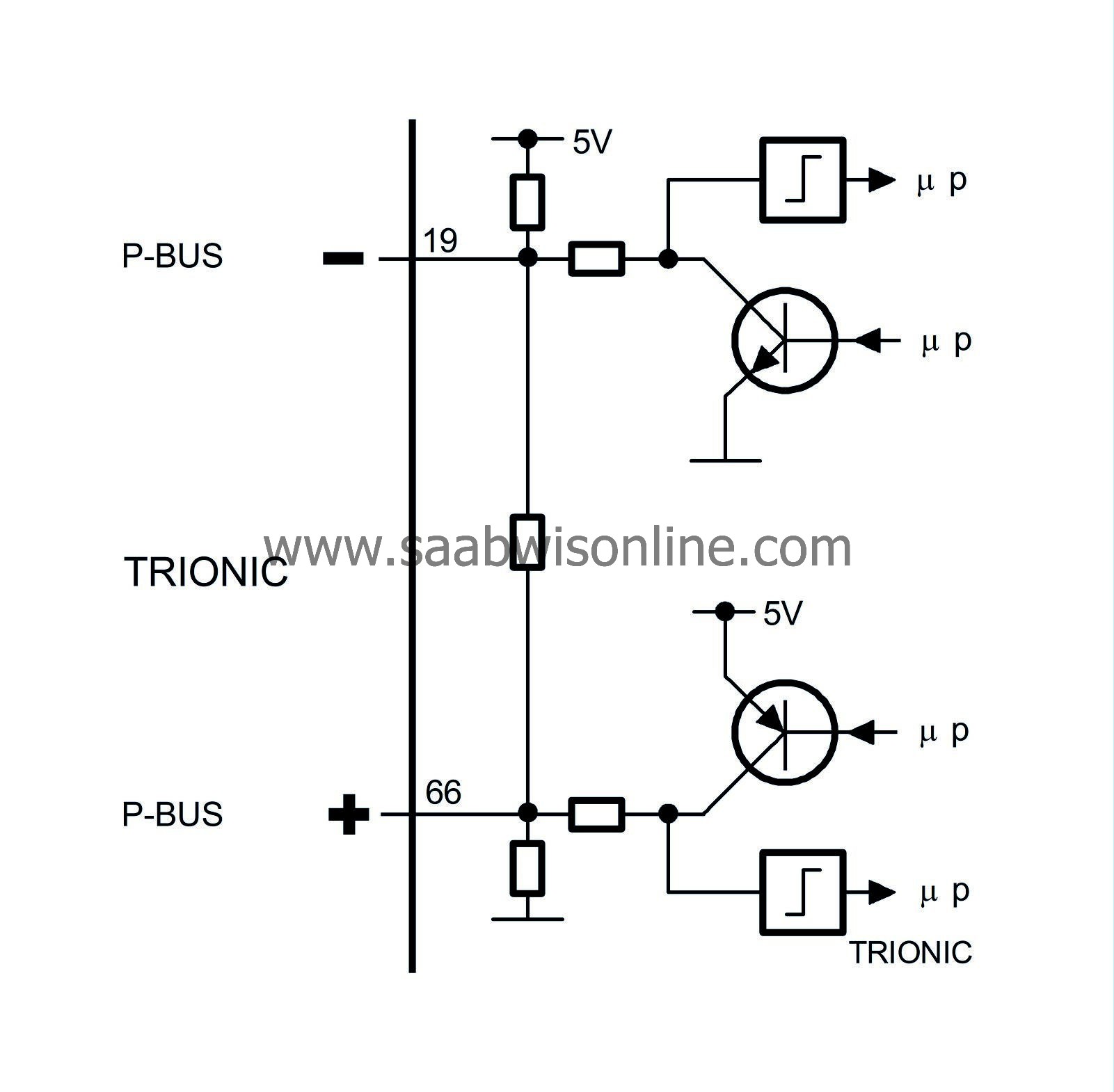P bus and I bus
| P bus and I bus |
When we say serially that means that information is sent in ”packets” that are sent sequentially in rapid succession.
In the Saab 9-5, all the control modules are bus connected with the exception of ABS and SRS. On cars with Traction Control the TC/ABS control module is connected to the P-bus.
The bus is divided into a P-bus (Powertrain bus) and an I-bus (Instrument bus). Both of the buses are connected to the main instrument unit (MIU). The buses are electrically isolated.
The diagnostic tool is not directly connected to the bus, but communicates with it via DICE, which is one of the control modules connected to the I-bus and therefore has access to all bus connected control modules.
The P-bus has a ten times greater data transmission rate than the I-bus. The reason for this is that the P-bus needs to receive information with the shortest possible delay, e.g. for air mass compensation when the selector lever is moved from N to D or for engine torque limitation in connection with gear shifting.
All the information transmitted by one of the control modules is available to all the other control modules connected to the bus. MIU is responsible for making the information that is available on one bus also available on the other bus.
The control module sends out information on the bus at regular intervals. The time between two transmissions depends on the information being sent and varies in time between 10 milliseconds (0.010 sec.) and 1 second. In addition, information is sent out by the control module every time the information is changed.
The transfer of information between the control modules takes place on two cables, bus+ (green cable) and bus- (white cable). Both the cables are twisted to increase their durability against electrical disturbance.



